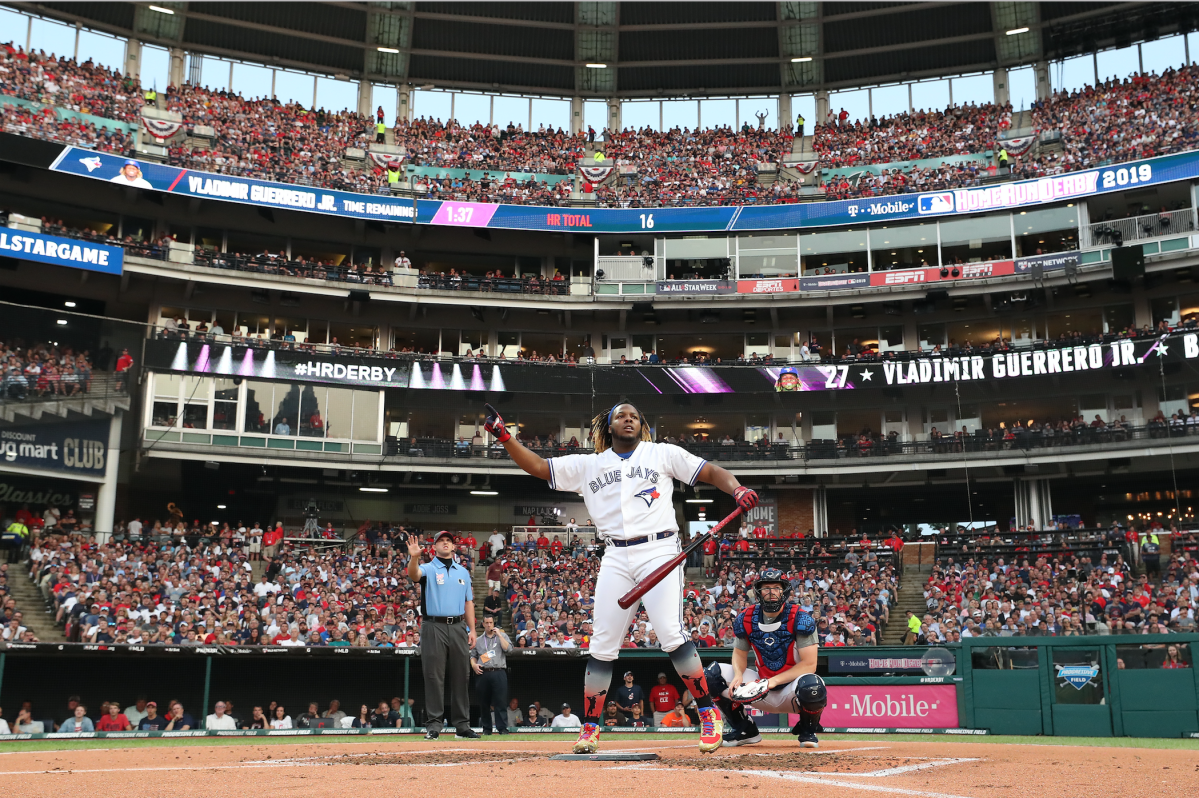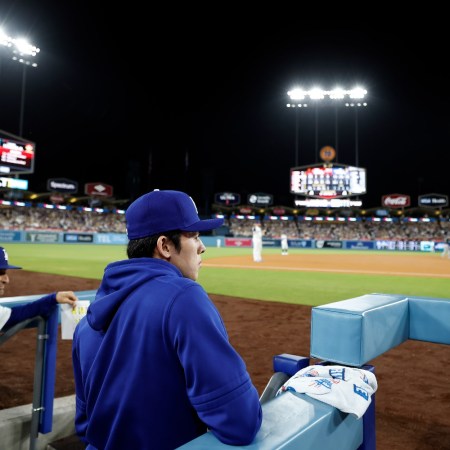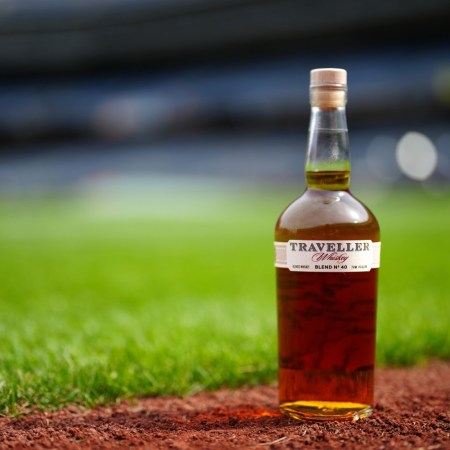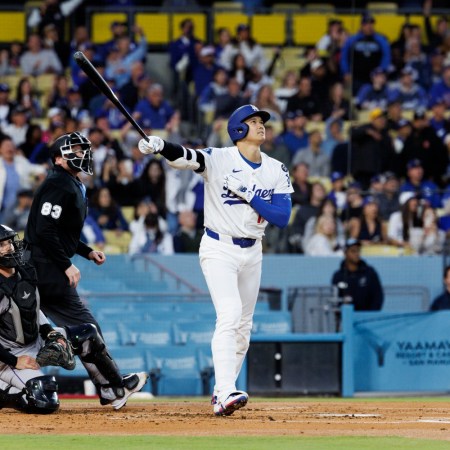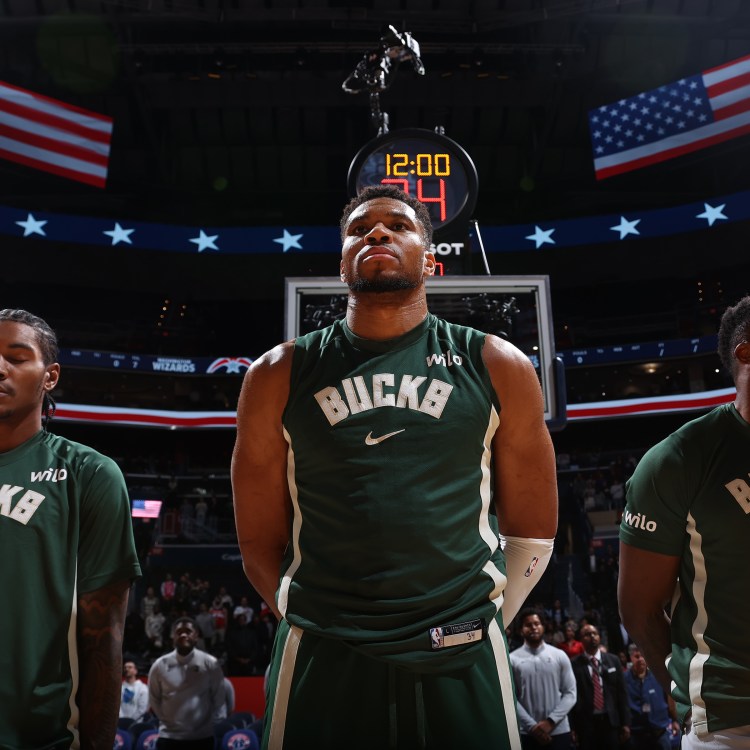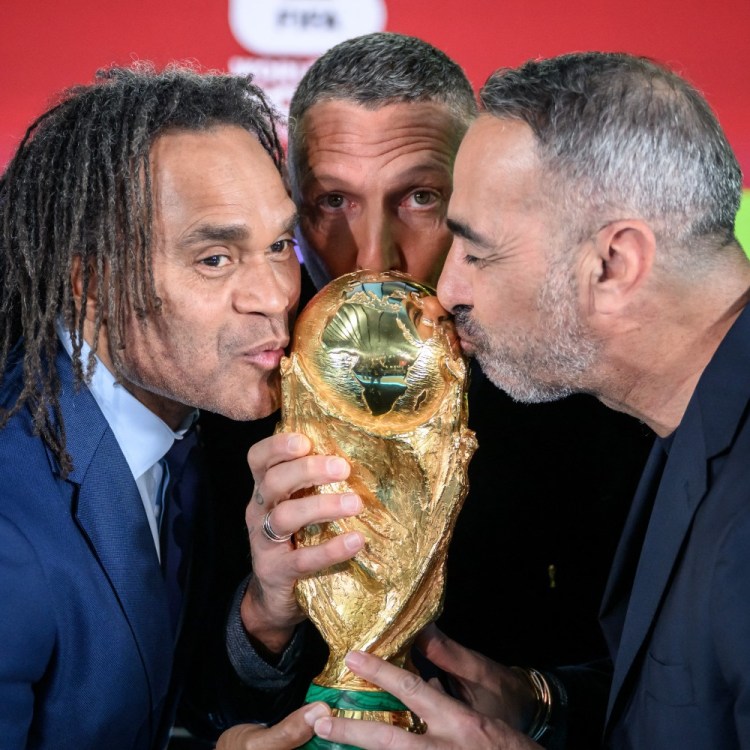To whomever it was at Major League Baseball that pitched the new “three-swing double OT” format, from the bottom of my heart, thank you.
Last night’s Home Run Derby was the greatest of all time. This is not really that hot of a take, and I’d suspect there aren’t too many “derby purists” out there who would argue otherwise. The competition has only been around since 1985, and it wasn’t even televised for its first five years. Even since then, it only found its groove in 2014, when the league shifted from the 10-outs format, where everything that wasn’t a home run was considered an out, to the current four-minute shot clock method, where the contestant can hit countless pop-ups or ground ball “outs” before catching fire and knocking 10 straight into the seats.
Which is exactly what happened in Cleveland last night. Pete Alonso, the Mets rookie who barreled into the All-Star Break with a league-leading 30 home runs, beat Vladimir Guerrero, Jr., in the final round with a walk-off 23rd home run. He showed why he’s going to be a star in the bigs for a long time, spraying balls to all corners of the field, and rallying just when he needed to (he had slow starts all throughout the night) to win the trophy and the new $1m payout. He plans to donate 5% apiece to Wounded Warrior Project and Tunnels to Towers, while the rest will go to his upcoming wedding. Well played, Pete.
He’s making the league minimum, $555k, so that money absolutely means something to him. Instead of running around the sidelines drinking Gatorade, he spent most of the night in the tunnels of Progressive Field, getting locked in.
The evening seemed like it was going to belong to Vlad Jr., son of the Canadian-Dominican Hall of Famer Vladimir Guerrero, who resembles a fully evolved Pokemon and already hits the ball harder and farther than any ballplayer we’ve ever seen, despite being unable to yet enjoy a Stateside beer. Guerrero Jr.’s inclusion in the contest was debated on sportstalk the last few days, as he’s only got eight home runs and has been in the league for all of fifteen minutes, but those takes went up in smoke a minute into the first round, as he went deep again and again, eventually finishing with 29 home runs.
Commentators Karl Ravech and Mark Teixeira immediately pointed out that Guerrero Jr. had bested Josh Hamilton’s derby record of 28 home runs in a single round, which Hamilton accomplished in 2008 at Yankee Stadium. I’m not sure how relevant that stat is. Even taking into consideration Yankee Stadium’s short right field porch, field Hamilton was operating under the outs format, which was far more difficult. More important than the number, really, is that Vladdy reached it twice.
In the second round, going up against Los Angeles Dodger Joc Pedersen, Guerrero Jr. hit another 29 homers, most of them again to deep left field, and anyone with half a cranium would’ve counted the powerful, but not that powerful Pedersen out. But the first basemen was on pace for 32 at the halfway mark, earned his bonus time, and climbed all the way to 29, tying the mark with a shot to right center as the clock showed zero. This triggered a minute-long tiebreaker, in which each player improbably hit eight more home runs. Which led to the first of two swing-offs, each allowing three swings per player. In the first round, Guerrero and Pedersen each tallied two. In the second, Guerrero hit two to Pedersen’s one.
(If I had a heat map for how my body reacted to this entire sequence, I can only imagine it would resemble my reactions to a battle in Game of Thrones, or the ending of Independence Day. I was standing no more than four feet from my screen by the time triple OT began, and I realized a few times that I had no vested interest in either Guerrero or Pedersen beating the other. I simply wanted more moonshots.)
Guerrero, of course, went on to lose to Alonso in the final round, managing 22 to Alonso’s 23. Vladdy finished with 91 home runs, 30 more than the second-highest total ever, and not one of ’em was a cheapie. Many news outlets are calling it a coming out party for the kid, and to the casual baseball fan, or larger zeitgeist, that may be the case. But his BP has been legendary for years, and it’s no surprise he was capable of something like this.
There were a few issues with the broadcast, to be sure. ESPN is as ADHD as ever, with a restless ticker splashed across the bottom (displaying at one point “Verlander believes the MLB is juicing balls”), and a disorienting split-screen. I could’ve done without Ravech’s pre-conceived storylines — If you’re starting a team in New York right now, do you want Aaron Judge or Pete Alonso? — and Teixeira’s earnest, incessant analysis of derby politics. Chris Berman sending his vocal chords out to pasture for the good of live TV was peak derby broadcasting. As for the contest itself, Alonso clearly benefitted from Guerrero taking a good 75 more swings throughout the night.
But the end result was a rare achievement for any major American sport: the skills competition that becomes an instant classic. All that tinkering MLB has done over the years has clearly worked. Despite lagging behind the NBA in the hearts of tweeting teens, the 2019 Home Run Derby generated far more buzz than the last four Slam Dunk Contests. And in doing so, it fully embraced its new identity. It’s not just chicks who dig the long ball. Anyone with a set of eyes wants to see balls flying out of the park. In May, MLB players combined for 1,135 home runs, an all-time record for one month. The man who hit the record-breaking homer?
Vladimir Guerrero, Jr.
The Charge will help you move better, think clearer and stay in the game longer. Subscribe to our wellness newsletter today.
